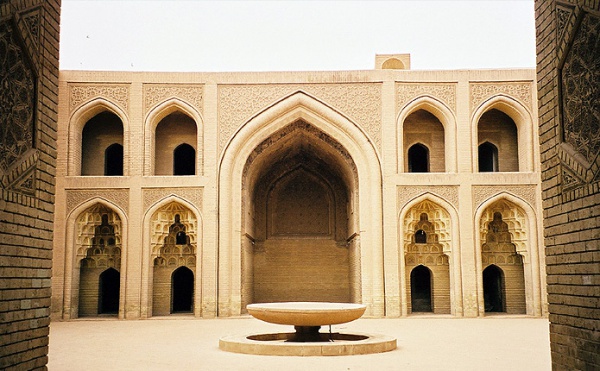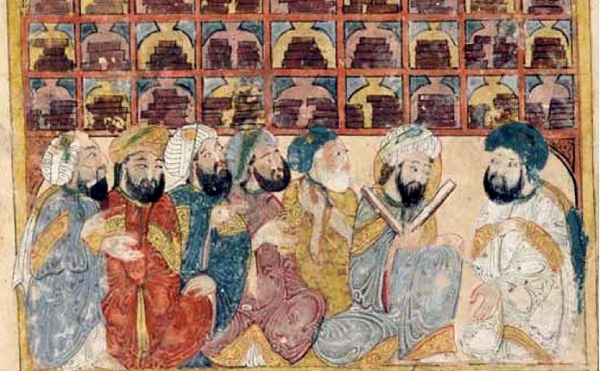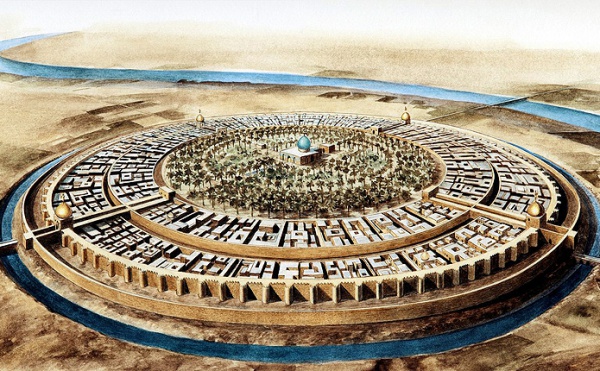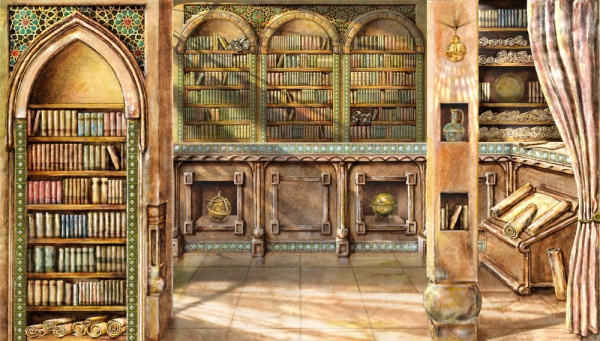The heyday of Baghdad was about 1200 years ago. For about 500 years, the city was the center of intelligentsia and culture, which was certainly influenced by the reputation of the city gained by the famous Caliphs (Al-Rasheed, Al-Ma’mun, Al-Mu’tadhid and Al-Muktafi). At that time, the city was the thriving capital of the Muslim world. It was the House of Wisdom, an academy of knowledge, which attracted scholars from all over the world. From mathematics and astronomy to zoology, the academy was the main center of research, thought and debate in the whole Muslim civilization.
As one of the largest and richest cities of the world at that time, Baghdad had wealth that went far beyond money. For more than two centuries, Baghdad was the House of Wisdom, an academy of knowledge. And today we are going to reveal the history of this center of intelligence. We have prepared for you several interesting historical facts, about which you knew nothing before.
The emergence of the academy

Some of Baghdad’s most famous Caliphs, including Al-Rasheed and Al-Ma’mun, took a personal interest in collecting and classifying global and ground-breaking scientific works. Apart from collecting books from East and West, they managed to bring together scholars from different parts of the Muslim land in order to establish one of the greatest academies in history, which had no parallel.
The House of Wisdom was initially built by Caliph Haround Al-Rasheed (ruled 786-809 AD) as a magnificent library named Khizanat Al-Hikma (the library of wisdom), which contained manuscripts and books collected by his father and grandfather about various subjects in arts and sciences in different languages.
Three decades later, the collection became so large that his son, Caliph Al-Ma’mun, built several extensions to the original building turning it into a large academy named Bayt Al-Hikma (the House of Wisdom), where one could study different branches of science. Later, he added a number of other research centers in order to create all the necessary conditions for more scholars. And in 829 he built an observatory.
The scholars

In the House of Wisdom, translators, scholars, scribes, writers, men of letters and other masters used to meet every day in order to read the collected works, translate them into other languages, rewrite, discourse upon the viability of this or that theory, discuss new ideas and exchange their experience. A lot of manuscripts and books on various scientific subjects, philosophical concepts and ideas, and in different languages were translated there.
The House of Wisdom became home for people from different parts of the Muslim world – both men and women, of different ethnicities and faiths, found there something they had been looking for around the world for many years. Among the academy’s leading lights were Al-Kindi, who translated Aristotle’s works into the Arabic language, and Hunyan ibn Ishaq, who translated Hippocrates.
Other names associated with the work of Baghdad academy include: Banu Musa bin Shakir Al-Munajjim (the Astronomer); Yahya bin Abi Mansour Al-Ma’mouni (the Ma’moun Astronomer); Muhammad bin Musa Al-Khawarizmi; Sa’eed bin Haroun Al-Katib (the Scribe); Hunayn bin Ishaq (Isaacs) Al-‘Ibadi and his son Ishaq; Thabit bin Qurra; and ‘Umar bin Farrukhan Al-Munajjim (the Ma’moun Astronomer).
The language

A wide range of languages including Arabic, Farsi, Aramaic, Hebrew, Syriac, Greek and Latin were spoken and read at the House of Wisdom.
Experts constantly worked to translate ancient texts into the Arabic language in order to reach new audience of works and allow scholars not only to read but also to discuss the works of the leading scholars of previous years, develop or reject their ideas. Among the famous translators was Youhanna bin Al-Batriq Al-Turjuman (the Translator Jonah son of the Patriarch), who translated the Book of Animals (Kitab Al-Haywan) by Aristotle.
Researchers say that Caliph Al-Ma’mun encouraged translators and scholars to replenish the library of the House of Wisdom by paying them the weight of each completed book in gold (agree that it is a decent payment!).
Traditions of learning
The successful knowledge transfer and the creation of a learning center in Baghdad echoed in many other cities of the Muslim civilization. In Cairo a Dar al-Hikma was built in 1005 by Caliph Al-Hakim and lasted for 165 years. Other cities in the eastern provinces of the Muslim world also established Houses of Science (Dar al-‘llm), or Houses of Knowledge to be more exact, in the IX-X centuries.
A bit later, in the XII century, Toledo in Andalucia (Muslim Spain) became another center of translation effort – but this time from Arabic into Latin. Thus, Arabic works and translations of important ancient Greek texts came to light, and Christian, Jewish and Muslim scholars flocked to the city in order to translate ancient Greek and Arabic works into Latin and then into European languages.
Books where the Baghdad academy is mentioned

“The House of Wisdom: How Arabic Science Saved Ancient Knowledge and Gave Us the Renaissance” by Jim Al Khalili;
“The House of Wisdom: How the Arabs Transformed Western Civilization” by Jonathan Lyons;
“The House of Wisdom” by Florence P. Heide and Judith H. Gilliland;
“The House of Wisdom” by Carmel Reilly;
“Bayt Al-Hikma and the Intellectual Movement during the Time of Caliph Al-Ma’mun” by David Edward Atkinson;
“1001 Inventions: Uncovering the Enduring Legacy of Muslim Civilization” by the National Geographic, edited by Professor Salim Al-Hassani.
What do modern researchers say about the House of Wisdom?
Dr Subhi Al-Azzawi, Senior Architect, noted in one of his interviews: “The House of Wisdom was also referred to as “Al-Hikma” Boostore (Khizanat Al-Hikma), or “the House of Wisdom of Al-Ma’moun” (Khizanat Dar Al-Kutub Al-Ma’mouniya). It should be pointed out that the Arabic term “Khizanat Kutub”, meaning literally a bookstore, is an old name meaning a present day library…”
Professor Jim Al-Khalili, Professor of Physics assures: “The Arab Empire was a hugely powerful state by late VIII-early IX century. Its rulers were getting taxes from across the empire and had enough money to spend on translations and patronage of scholarship. About this time the House of Wisdom was set up in Baghdad by one of the Abbasid Caliphs, al-Ma’mun. It began as a translation house, translating Greek texts into Arabic and rapidly started to attract the greatest minds in the Islamic world, while Arabic became the international language of science”.
Professor Faroque Ahmad Khan, Professor of Medicine, in one of his works paid attention to the fact that separate chapters in the book by Michael Hamilton Morgan “Lost History: the Enduring Legacy of Muslim Scientists” are devoted to the great accomplishments of Baghdad during the rule of the Abbasid Caliph Al-Ma’mun in 813-833 AD, under whose leadership Baghdad became the center of learning and the heart of the Arab golden age: “Caliph al-Ma’mun’s House of Wisdom, where Christian and foreign translators rendered the Greek, Roman, Byzantine, Persian, and Hindu classics into Arabic, helped lay the foundation of modern mathematics, astronomy, chemistry, medicine and literature. As a result of al-Ma’mun’s patronage and vision, Baghdad gave birth to algebra and advanced trigonometry, the names of the stars, the mixtures of tinctures and remedies, and the heart of philosophy and literature. It was in Baghdad that Scheherazade told the tales of the One Thousand and One Nights”.
Abbasid caliph Harun al-Rashid founded the House of Wisdom in Baghdad during his reign (786-809). It was a research and educational center where leading scholars from various fields came to share their knowledge. The House of Wisdom was the largest repository of books in the whole world already by the middle of the IX century. It was the leading center for the study of mathematics, astronomy, medicine, alchemy, chemistry, zoology, geography and cartography. Unluckily the Mongols destroyed the House of Wisdom when they attacked Baghdad in 1258. However, its history and legacy hold many more secrets and incredible stories and discoveries that we have yet to learn...
Ilmira Gafiatullina
Photo: Muslim Heritage
